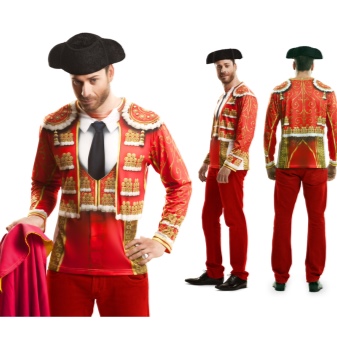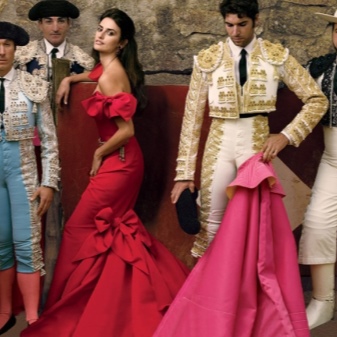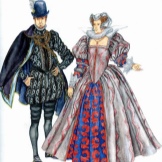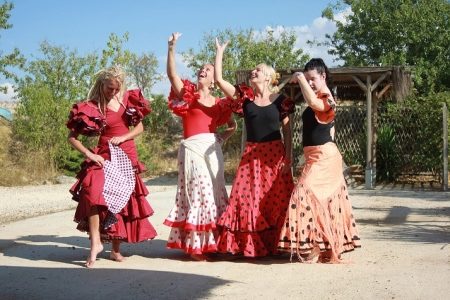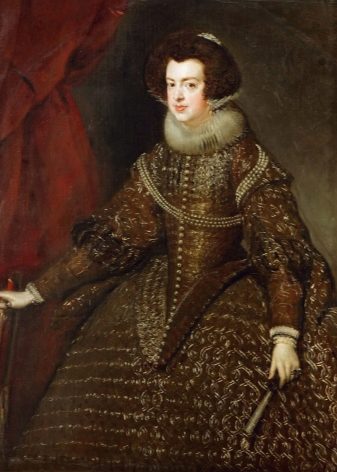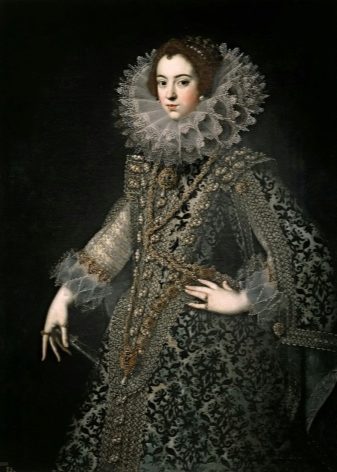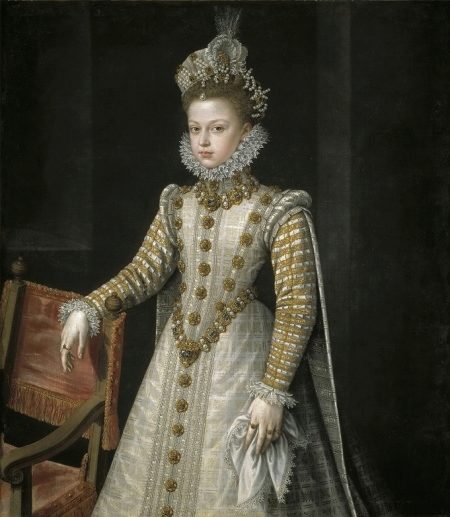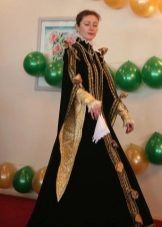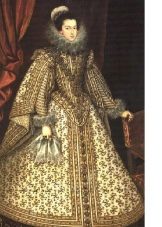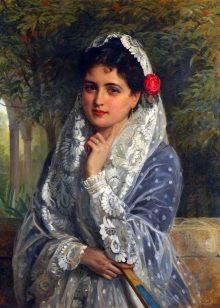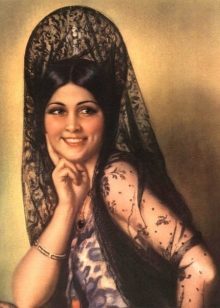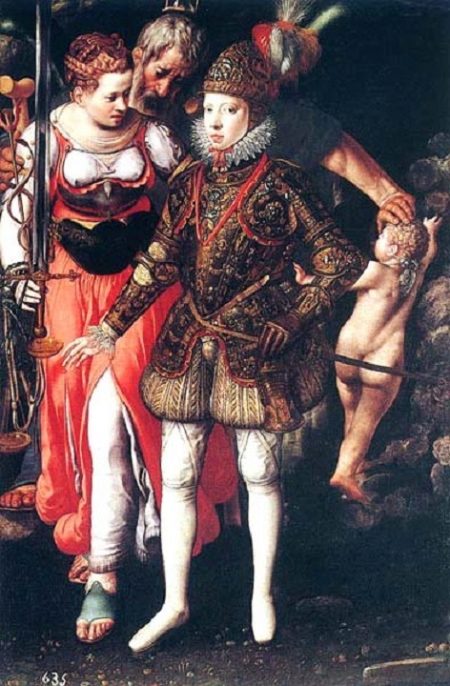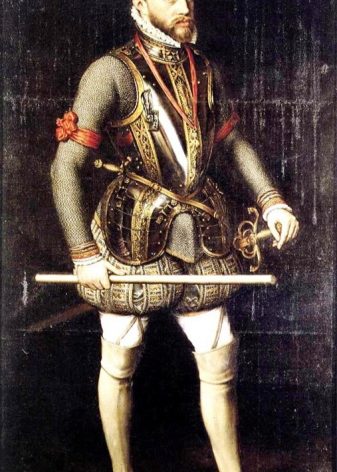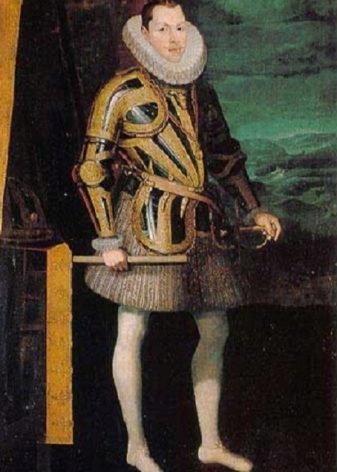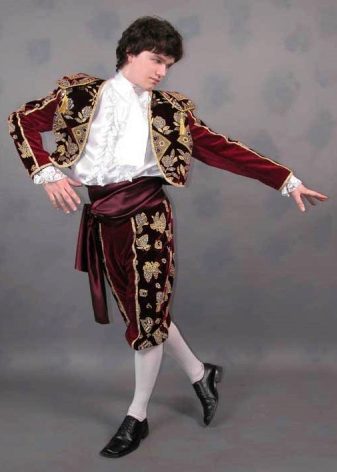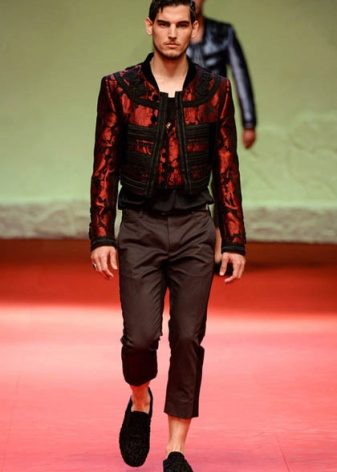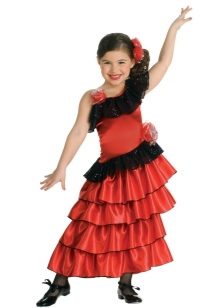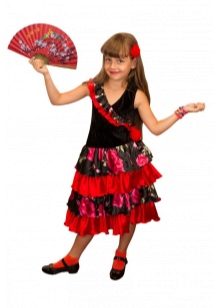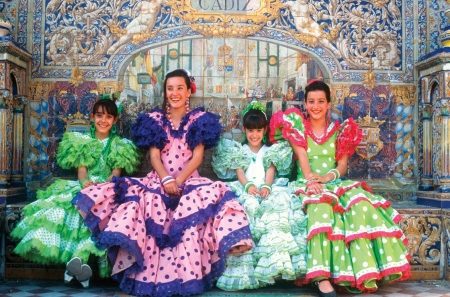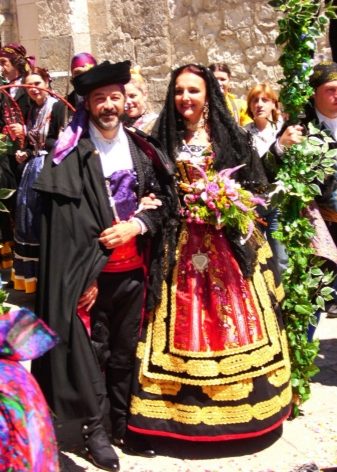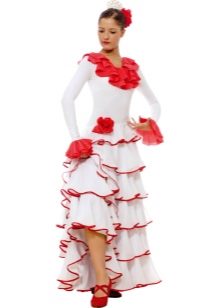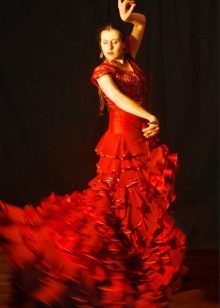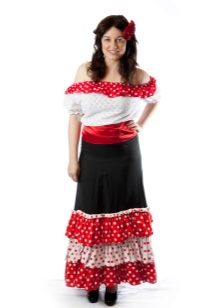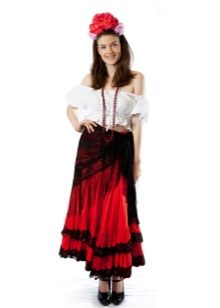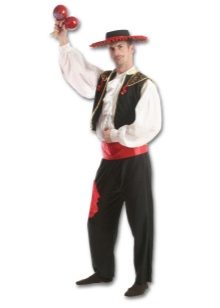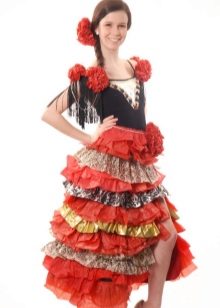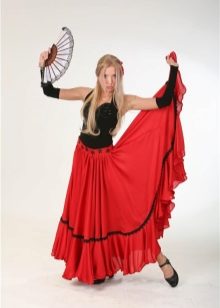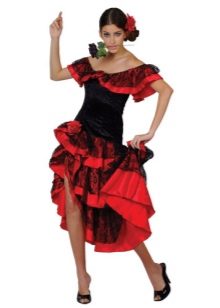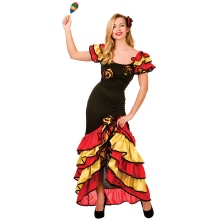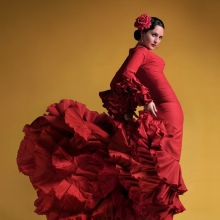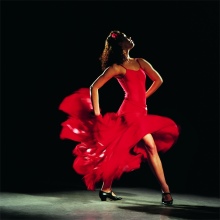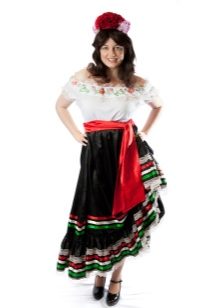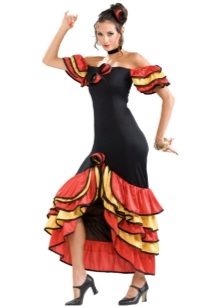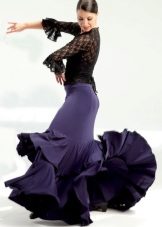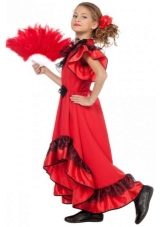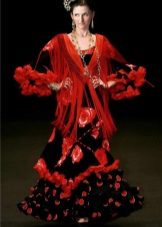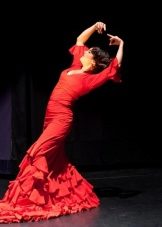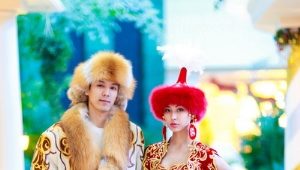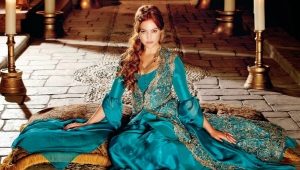Spanish national costume
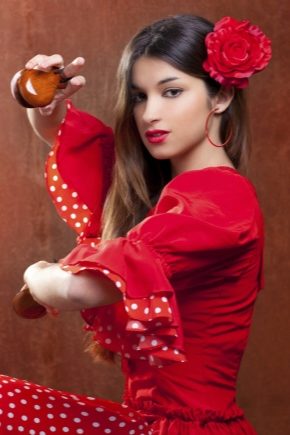
Spain is a country with a rich history and culture. Perhaps many at least once in their lives went deep into the study of traditions, flamenco and spectacular bullfighting. In addition, of great interest is the national dress of the Spanish people.
Throughout the Middle Ages, the traditional costume regularly underwent changes, eventually securing its position as one of the most striking and impressive.
In our article we will describe in detail the historical aspects of the formation of the traditional costume in Spain.
A bit of history
The development of the traditional costume of Spain took place over the 15-19 centuries.
In the 16th century at the court of the Spanish Habsburgs rigid frameworks for costumes came into use, they were popular throughout the whole century up to the 17th century. They had an impact on the development of costumes in other European countries.
The formation of the main traditional features of the costume was influenced by the knightly image, etiquette of the royal court and religion. The costume emphasized naturalness and harmonious proportions, which was typical of the Renaissance, but, on the other hand, there were special criteria for hiding the body.
In suits, they have always strived to extend the shoulder line with the help of special rollers or an elongated shoulder line. Already in the 18th and 19th centuries, a more modern version of the attire began to take shape, the subjects of which are present in modern models of national costume.
Varieties
Female
The costume for ladies has always been distinguished by clear and regular lines and a triangular silhouette. The dresses had a corset, tightly tightened at the waist, closed neckline in the form of a bodice of complex cut.
Chest tried to make visually less voluminous with a corset. The front part of the bodice ended in a sharp cape. To the top they sewed a metal verteguade, on which two skirts were put on. The upper part had a high triangular cut and opened the lower skirt, which was always of a different color.
Of course, the dresses were decorated with various kinds of decorative elements, in the form of strands of pearls, gold threads and decorative nets of threads.
The sleeves of the dress were usually long and double. The bottom layer was narrow, and the top layer could vary, for example, be with a slit in the fold where the arm was passed. Usually the second sleeve had a looser or flared shape, the edges of the sleeves elegantly hung down. In the women's attire there was a bristle collar, he had a neckline in the front and opened his neck.
The costume described by us was inherent in the representatives of the aristocracy.
Residents of cities did not use a corset and frame for skirts. Their suit consisted of a shirt, narrow bodice, detachable sleeves and skirts with lots of folds and ruffles.
Later, in the late 18th and 19th centuries, women's outfit looked a little different. It was a fitted vest with wide lapels, there was no corset, a skirt with pleats on the floor, a mantilla, a crest, a fan and a shawl.
An integral element is a mantilla - a cape with lace, which covers the chest, shoulders and head. The comb was fastened high to the hair in an upright position, and the mantilla was covered on top.
Male
The traditional costume for men in Spain consisted of a shirt, cropped trousers, a tunic and a raincoat.
Shirt was decorated with a bryzhevy collar and high cuffs of batiste, decorated with lace.
Cropped trousers were spherical, sometimes supplemented with decorative fabric in the form of vertical stripes. Such pants were also called bragett, and tight-fitting stockings were worn under them - calles.
Kolett, he is a hubon, was a short jacket to the waist line or to the middle of the thighs. He had a tight-fitting style, a front zipper, a stand-up collar and narrowed sleeves with linings on the shoulders and a detachable basque.
Such a collar was the cause of the appearance of a corrugated collar. Its habitual form gradually became more and more in size, ruffles and laces were added to it. So, at the end of the 16th century. it was already up to 20 cm in size.
Raincoats were a variant of outerwear, while they had a variety of forms. They could be shortened or elongated, with a hood or without a collar. Cape capes were the most popular, whether they were worn unbuttoned on the same zipper under the neck. The cape was always adorned with shoulder pads and spectacularly hanging wide sleeves.
It was in Spain, for the first time in Europe, used a frame in the form of quilted lining made of cotton wool, horsehair and sawdust. Clothes were put on such a frame.
Later, men's outfit has undergone significant changes. Now he included a cropped jacket - a figaro, tight pants approximately knee-deep, a vest, a belt covering the waistline, stockings, a three-cornered hat, a raincoat and shoes with buckles.
Child
In general, children's costumes were similar to adult clothes. The boys wore cropped pants with leggings and a shirt.
For girls, a flared skirt, shirt, and also collars of a specific shape were selected. Unlike adult costumes, children were more contrasting shades and patterns.
Features
Colors and patterns
The color scheme of clothes varied depending on the historical period of time. At the beginning of the Middle Ages it was pale non-colorful shades: black, brown, gray and white. There were also relatively bright shades: purple and green.
In the 19th century, costumes were characterized by bright colors, for example, red. Often clothes were decorated with patterns of gold or silver. They were mostly flowers or peas.
Fabrics
Usually in the manufacture of clothing dominated smooth monochrome fabrics. In the 18-19 centuries, patterned fabrics, embroidered or printed, became widespread.
In the patterns often used religious motifs, animals. Also fabrics were decorated with ribbons, stripes and lots of lace.
Cut
As we have already noted, there were clear lines in the costumes, with the help of which trapezoidal silhouettes and flared styles were created.
All items of wardrobe differed free cut, including men's pants and shirts.
Accessories and decorations
Male representatives wore hats made of felt or hats, cocked hats, berets, hats of red color, similar to Phrygian caps.
Ladies decorated hair of different faces with hairpins and combs.
In both women’s and men’s costumes, jewelery has always been lavishly displayed. It could be pearl necklaces, belts made of precious metals, earrings, rings, belts, unusual buttons-fasteners, chains, cameos, and more.
Footwear
Men wore low-heeled shoes, mostly made of soft leather or velvet. From the middle of the 16th century there were changes in the shape of the shoes, the nose of the shoes became sharper. On the velvet shoes, slits were made through which the colored lining was visible.
Women's shoes were very diverse. They were also made from soft leather, velvet or satin. From the middle of the 16th century Heel shoes have already begun to appear.
Women have always sought to hide their skirt shoes. The exception was shoes with thick wooden soles. The thickness of the soles testified to the welfare of the ladies.
Modern models for traditional dances
This is, first of all, a wide flared skirt to the floor.
Standard style - flared from the hip, soft light texture, able to gracefully flow when moving.
Usually made in dark colors, often with printed patterns.
A white blouse with a non-strict style complements the skirt.Mandatory details for the blouse are: cuffs, lace, or even a jabot, frills, and the material should be soft and tender. Such a shirt immediately makes the whole image feminine.
An alternative are wide-cut trousers - skirt or flared trousers. In addition to monochrome tone, they can be in a strip or a large cell.
A rich red dress is often used to associate with Spanish culture. It usually has loose fit or multi-layer.
A floral print dress is another attribute of Spanish culture. Often it is worn with a wide-brimmed hat or scarf.
Another traditional costume is worn together with a dark-colored corset, which is worn over the top of a blouse or separately.
If we talk about accessories, girls often use flowers, decorating their hair or pinning clothes. Another important accessory is a shawl with a fringe or a bright pattern.
